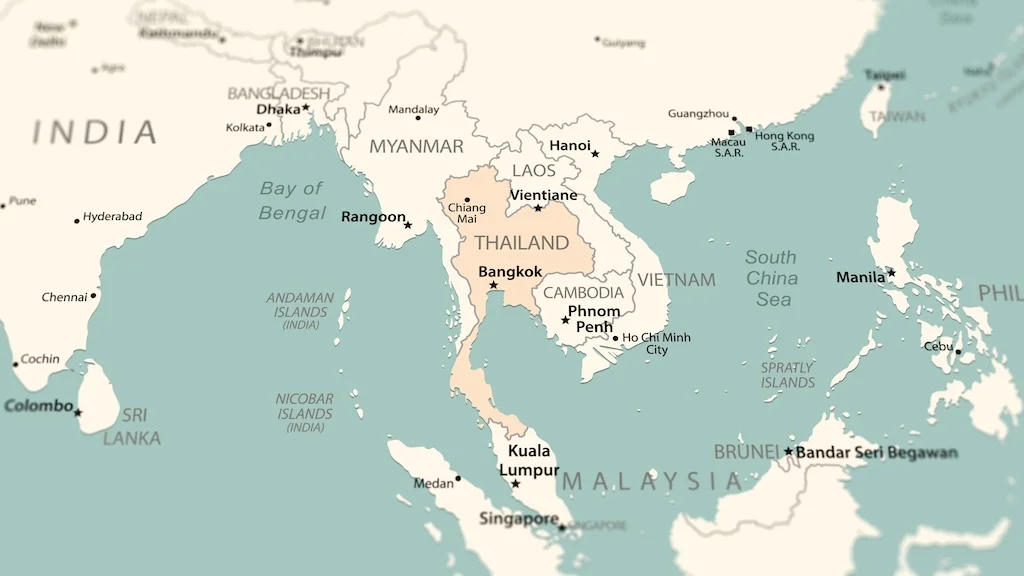
Thailand is located in Southeast Asia and shares its borders with several neighboring countries.
Thailand is situated to the north of Malaysia, east of Myanmar, and west of Laos and Cambodia.
The country boasts diverse landscapes, including stunning natural beauty and a rich variety of unique cultures. Thailand ranks as the 50th largest country in the world with a population of around 70 million people, making it the 20th most populous nation globally. The capital city of Thailand is Bangkok, which serves as the administrative center of the country and the central hub for the country's governance.
In addition to Bangkok, Thailand has a total of 76 other cities, bringing the overall count to 77 cities.
Thailand is a fascinating destination for people from all over the world because of its history and cultures, as well as its stunning tourist spots, delicious food, and captivating historical sites, which make it an irresistible destination for travelers. Each year, Thailand draws in over 200 million visitors, offering them the opportunity to immerse themselves in the unique charm and heritage of the vibrant Thai experience.
Contents
Provinces in Thailand
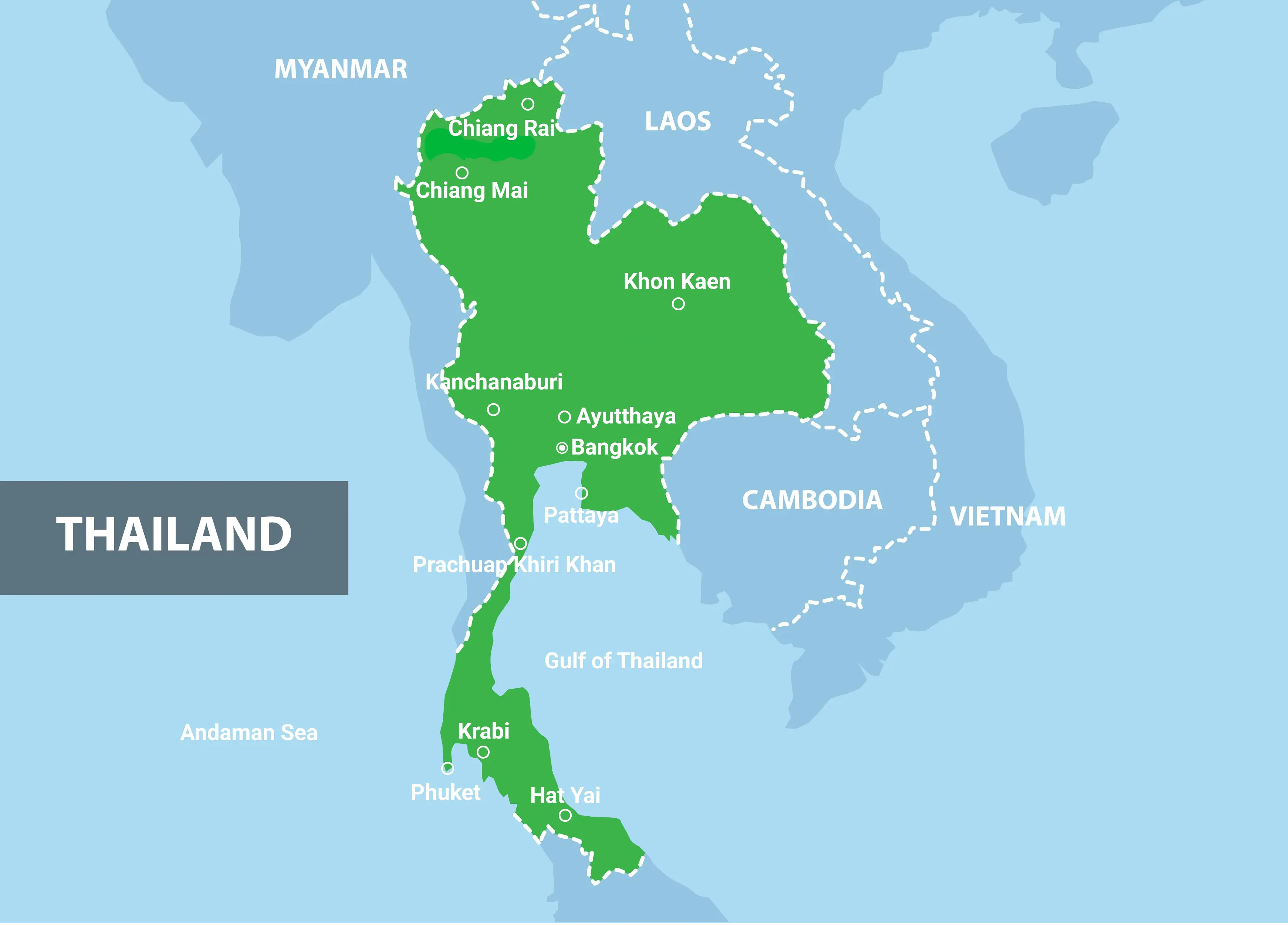
Thailand is a country full of cultural heritage, natural beauty, and vibrant traditions, spread across 77 provinces. Each province has its own unique charm. Starting with Bangkok, our capital city, you’ll find a mix of modern skyscrapers, beautiful temples, and colorful nightlife. Not far from Bangkok, Ayutthaya is a historic city filled with ancient ruins and temples that still hold their beauty.
In the north, provinces like Chiang Mai, Chiang Rai, Mae Hong Son, and Nan are known for their mountains and natural scenery. You can breathe fresh air on mountain peaks, experience the simple lifestyle of local villagers, and admire their charming handicrafts.
For a lively and colorful city, Pattaya in Chonburi province is a perfect choice. It’s a seaside destination with beautiful beaches, exciting nightlife, and fun activities to enjoy all day and night.
If you love the sea, the southern part of Thailand is a must-visit. The Andaman coast, including Phuket, Phang Nga, Krabi, and Trang, as well as the Gulf of Thailand side with Prachuap Khiri Khan, Surat Thani, and Nakhon Si Thammarat, offers stunning beaches, crystal-clear waters, and delicious southern food that you shouldn’t miss.
Traveling in Thailand is never boring because every place has its own story to tell. Pack your bags and start exploring the wonders waiting for you!
Geography and Climate
Thailand’s geography gives rise to a variety of landscapes across its regions, shaped by the country's geography. The north is characterized by rugged high hills and intricate mountain ranges. The northeast, known as "Isan" by the Thai people, is primarily comprised of plateaus. The central region features expansive plains, enriched by the Chao Phraya River, Thailand's longest river, which flows through this area. This makes it an ideal region for agriculture and cultivation, making it the most prosperous and abundant region in the country. The south is bordered by both the Andaman Sea and the Gulf of Thailand, which offers excellent fishing opportunities. This area is well known for being Thailand's largest supplier of seafood.
Let’s explore Thailand’s diverse regions:
- North: This area features complex high hills and enjoys pleasant weather year-round, especially during the winter.
- Central: Expansive plains dominate central Thailand. The weather tends to be warm.
- East: Hot and humid conditions persist throughout the year.
- Northeast (Isan): Known for its plateaus, the weather varies—some areas are quite hot, while higher areas have nicer weather.
- West: Hills, forests, beaches, and waterfalls define this region. Expect hot and humid weather.
- South: Bordered by both the Andaman Sea and the Gulf of Thailand, the south experiences hot and humid conditions year-round, accompanied by frequent rain.
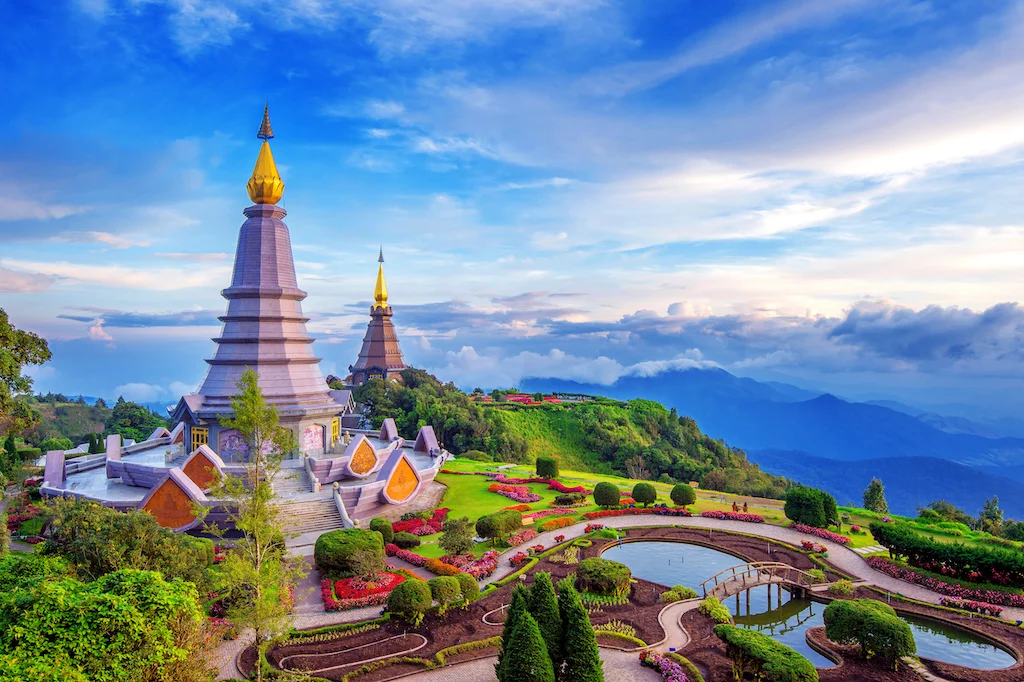
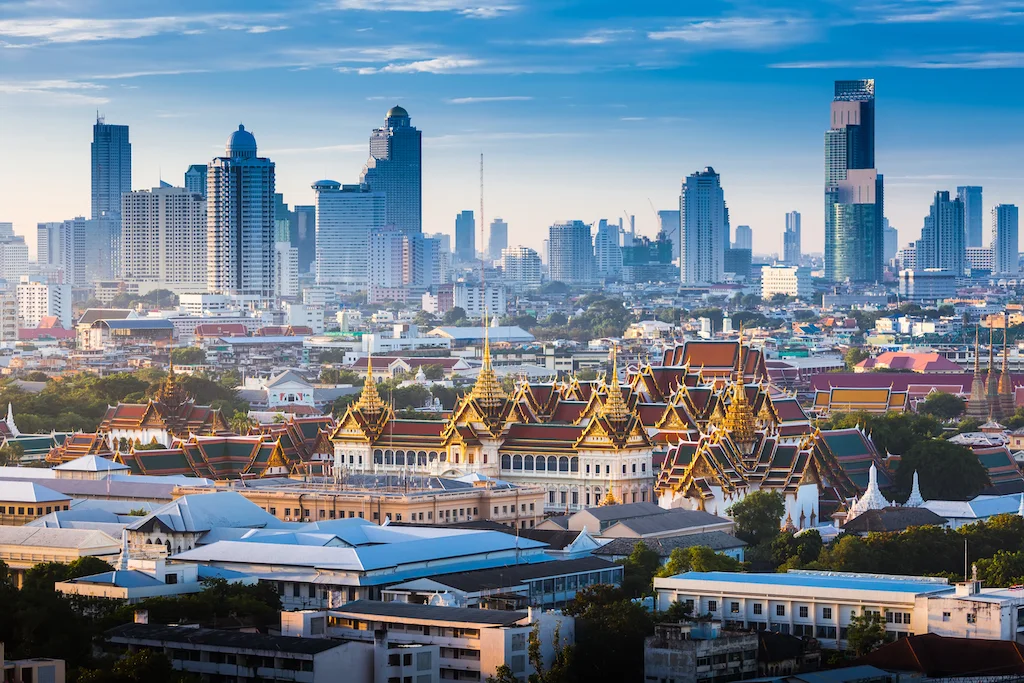
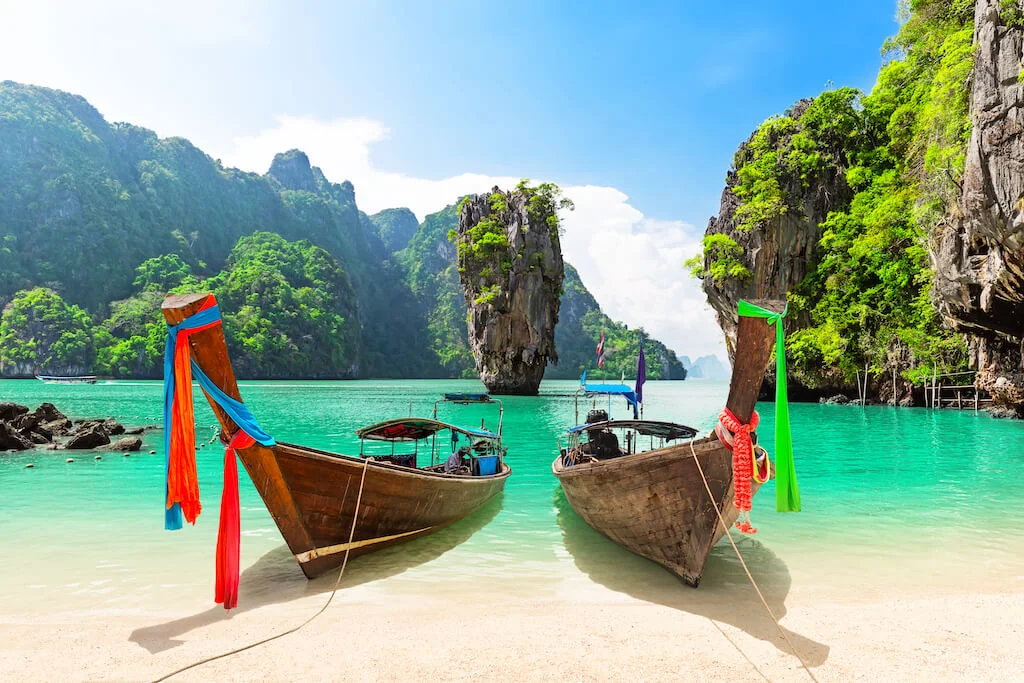
Each region in Thailand offers a distinct landscape and climate, as well as unique cultural attributes such as food, language, and accents.
The climate in Thailand is generally hot throughout the year, characterized by a Tropical Savannah Climate. The average temperature across the country is approximately 28 °C.
The country has three distinct seasons:
- Summer (March–May): During this period, temperatures can soar, reaching up to 40°C.
- Rainy Season (June–October): Monsoons bring heavy rainfall, especially in the central and southern regions.
- Winter (November–February): The cooler season with more pleasant temperatures.
| Regions | Jan | Feb | Mar | Apr | May | Jun | Jul | Aug | Sep | Oct | Nov | Dec |
|---|---|---|---|---|---|---|---|---|---|---|---|---|
| Bangkok | ||||||||||||
| Central | ||||||||||||
| Northern | ||||||||||||
| Eastern | ||||||||||||
| Northeastern (Isan) | ||||||||||||
| Western | ||||||||||||
| Southern (Gulf of Thailand) |
||||||||||||
| Southern (Andaman Sea) |
Note:
= Summer, = Rainy, = Sun and Rain, = Winter
Language, Religion and Culture
Thailand is a country with a rich diversity of languages and cultures. The official language is Thai, but the Thai people exhibit a wide variety of cultural elements, including dialects, religious practices, and traditions. Each region has its own unique linguistic characteristics such as the Northeast (Isan), Northern, and Southern dialects. While these dialects originate from the Thai language, they feature different accents and variations in certain words.
Buddhism is the predominant religion in Thailand. Approximately 95% of the population adheres to this ancient faith. Temples (known as wats) dot the landscape, and religious practices are deeply ingrained in daily life. Throughout the year, Thailand hosts numerous festivals and traditions that showcase Thai culture to visitors. These include Songkran Day and Loy Krathong Day, as well as religious and regional traditions.
- Songkran Day: The Thai New Year, celebrated with water splashing and joyful festivities.
- Loy Krathong Day: A magical evening when people release beautifully decorated floats (krathongs) onto rivers and waterways.
- Religious Traditions: From temple visits to merit-making ceremonies, religious observances play a significant role.
- Regional Traditions: Each area has its customs, reflecting local history and beliefs.
Politeness in Thai Language:
When referring to themselves, men use the word "ผม" (pronounced “phom”) for “I”. To end sentences politely, they add "ครับ" (pronounced “khrap”)
Women use "ฉัน" (pronounced “chan”) for “I”. and end their sentences with "ค่ะ" (pronounced “kha”) to express politeness.
To address others politely, both genders use their name or "คุณ" (pronounced “khun”) for “you”.
While you might occasionally hear impolite words like "กู" (pronounced “gu”) for “I” or "มึง" (pronounced “meung”) for “you”, it’s essential to avoid using them in regular interactions or usual situations.
Example Thai Phrases for Daily Life| English | ภาษาไทย | อ่านว่า |
|---|---|---|
| Hello/Hi | สวัสดี | sà-wàt-dii |
| How are you? | คุณสบายดีไหม | sà-baai dii mái |
| Thank you | ขอบคุณ | khàawp-khun |
| I'm sorry | ขอโทษ | khǎaw-thôot |
| No problem | ไม่เป็นไร | mâi-bpen-rai |
| Good bye | ลาก่อน | la-kon |
| Good luck | โชคดี | chôok-dii |
| What is your name? | คุณชื่ออะไร | khun chue à-rai |
| Can you help me please? | รบกวนช่วยฉันหน่อยได้ไหม | róp-guuan chûai chǎn noi dâai mǎi |
| Where is [place name]? | [place name] ไปทางไหน | [place name] bpai taang nǎi |
| How can I go [place name]? | ฉันจะไป [place name] ได้ยังไง | chǎn jà bpai [place name] dâi yang-ngai |
| How much is it? | ราคาเท่าไหร่ | raa kaa tâo rai |
| Can you give me a discount? | ลดราคาได้ไหม | Lót raa kaa dâi mái |
| Delicious | อร่อย | à-roi |
Food
In Thailand, it's customary for people to have three meals a day, with rice being the main dish. Thai cuisine is known for its flavorful combination of spicy, sour, salty, and sweet tastes.
- Breakfast: Mornings begin with simple yet satisfying, easy-to-prepare dishes like congee, rice soup, and grilled pork or chicken served with sticky rice and flavorful rice and curry.
- Lunch: Consists of convenient and quick options such as rice and curry, noodles, chicken rice, stewed pork knuckle rice, or papaya salad.
- Dinner: Similar to lunch, dinner often features dishes found in local restaurants or any other food available. Whether enjoyed at home or in restaurants, dinner in Thailand offers a wide variety of flavors.
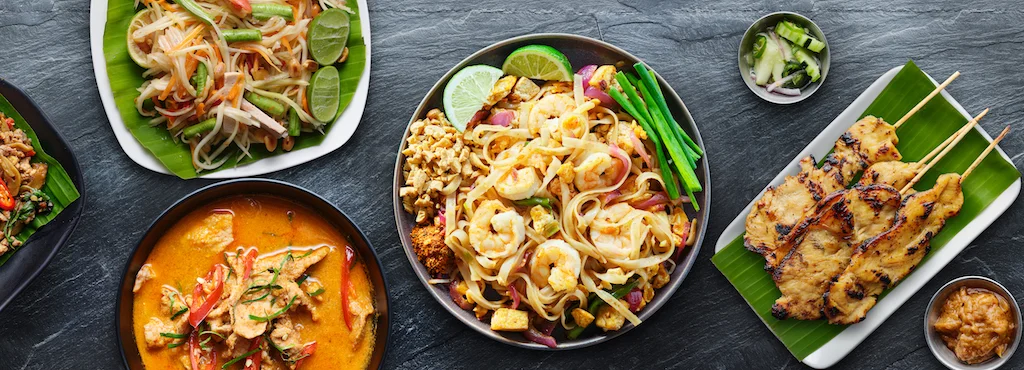
Time Zone
Thailand operates in Greenwich Mean Time (Indochina Time or ICT), which is UTC+7. This means that Thailand is 7 hours ahead of Coordinated Universal Time (UTC). Unlike some countries, Thailand does not observe Daylight Saving Time changes or seasonal time changes due to its geographical location.
As of now, Thailand Time is Date-Time: -:-:-
Unit of measures
- Lenght: millimetre/millimeter (mm), centimetre/centimeter (cm)
- Distance: metre/meter (m), kilometre/kilometer (km)
- Weight: gram (g), kilogram (kg)
- Temperature: degree Celsius (°C)
Currency
In Thailand, the official currency is the Thai Baht (THB), which comes in both banknotes and coins. Additionally, cashless payments through credit, debit, or travel cards are widely accepted at shopping malls, department stores, chain stores, and large retail outlets. When visiting Thailand, it is essential to have both cash and cashless payment options for daily transactions.
Banknotes
- 20 Baht
- 50 Baht
- 100 Baht
- 500 Baht
- 1000 Baht
Coins
- 1 Baht
- 2 Baht
- 5 Baht
- 10 Baht
- 25 Satang
- 50 Satang
Currency Exchange
- Banks: Banks are reliable and widely used for currency exchange. Major banks such as Siam Commercial Bank (scb) , Kasikornbank (kbank) , Bangkok Bank (bbl) , Bank of Ayudhya (bay) , TMBThanachart Bank (ttb) offer competitive rates. Check their official websites for real-time exchange rates.
- Currency Exchange Stores: Look for well-known exchange stores like Superrich Thailand (Green) , SuperRich (Orange) Both of the Superrich stores have numerous branches, particularly in Bangkok. Making it incredibly convenient to utilize their currency exchange services.
- ATMs: Automated Teller Machines are accessible throughout Thailand, allowing you to withdraw Baht directly from your account.
Cost of living
Living expenses in Thailand are significantly more affordable compared to the United States, European countries, and various other nations around the world, including the USA, Canada, Australia, and Europe. Even within Southeast Asia, Thailand’s cost of living remains relatively budget-friendly when compared to Malaysia, Indonesia, and Vietnam.
Here’s a glimpse of cost examples
| Expense | Cost (THB) |
Currency Exchange Rate 1:~ |
|---|---|---|
| Accommodation in Bangkok | ||
| Hostel | 300 - 600 Baht per night | - - - - per night |
| 2-Star Hotel | 1,500-3,000 Baht per night | - - - - per night |
| 3-4-Star Hotel | 3,000-6,000 Baht per night | - - - - per night |
| 5-Star Hotel | > 6,000 Baht per night | > - - per night |
| Food and Beverage | ||
| Drinking Water Bottle 600 ml. | 7-10 Baht per bottle | - - - - per bottle |
| À la carte (made-to-order food) | 50-100 Baht per dish | - - - - per dish |
| Restaurants in department stores | 100-200 Baht per dish | - - - - per dish |
| Luxury Restaurants | 300-500 Baht per dish | - - - - per dish |
| Transportation | ||
| Public transport (BUS) | 20-30 Baht per trip | - - - - per trip |
| Public transport (BTS/MRT) | 15-70 Baht per trip | - - - - per trip |
| TAXI | 40 Baht per kilometer | - - per kilometer |
Please note that the information above is an approximate figure.
It's important to note that tipping in Thailand is not mandatory. Tipping is usually an expression of appreciation for good service rather than a compulsory practice, and there is no set minimum amount for tipping. It was just given as a gesture of thoughtfulness.
Value Added Tax (VAT)
In Thailand, products and services are subject to a 7% value-added tax (VAT). Tourists are eligible to receive a refund of the VAT paid on their purchases. This can be done at the designated VAT refund for tourist areas at either Suvarnabhumi Airport or Don Mueang Airport before departing Thailand.
Tourists can claim a VAT refund if they meet the following criteria:
- Not of Thai nationality.
- Do not have a domicile in Thailand.
- Depart from an international airport.
- Purchase goods from stores displaying the “VAT REFUND FOR TOURISTS” sign.
- Goods must be taken out of Thailand within 60 days from the purchase date.
- The total cost of products (including VAT) must be at least 2,000 Baht per day per store.
- On the purchasing date, tourists should present their passport and request the VAT Refund Application for Tourists form (P.P.10) along with the original tax invoices.
- Before check-in on the departure date, tourists must show the goods and the completed form to a Customs officer.
- For luxury goods (e.g., jewelry, gold, watches), tourists must hand-carry and show the items again at the VAT Refund for Tourists Office after passing immigration.
Payment methods for the refund:
- For amounts up to 30,000 Baht: Cash (Thai baht), bank draft (USD, EURO, STERLING, YEN), or transfer to a credit card account (VISA, MASTERCARD, JCB).
- For amounts exceeding 30,000 Baht: Bank draft or credit card transfer (with associated fees deducted from the refund amount).
This condition may be subject to change. Please verify the terms and conditions on the website of the Thailand Revenue Department. www.rd.go.th


